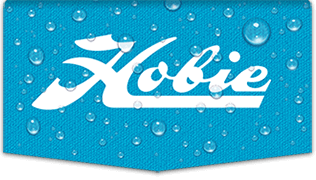Daredevil wrote:
ncmbm wrote:
I could match them on boat speed going to "A" but they would pull toward the mark while running the same lay angle as me. The boats move windward without adjusting angle of attack, they lift to weather. Any of the newer designs has the ability.
Could you please elaborate? Im not up on all the correct terminology, thanks!
Translation:
We had equal speed on a close hauled course (going to "A"), but they didn't slip to leeward as much as I did, so they seemed to lift to windward.
Let me try to answer some of the questions posed in this thread (and I am an engineer, a Naval Architect to be precise):
How does a symmetrical foil create lift?srm got this right. A sailboat sailing upwind side slips to leeward. This angle is alpha (
a) - the angle of attack. On a symmetrical foil, lift (force perpendicular to the centerline of the foil) and drag (force parallel to the centerline of the foil) increase proportionately with
a until the foil stalls, when flow separates from the low pressure side. At stall, the drag continues to increase with α, however, lift actually decreases. Typically,
a < 4°. Stall occurs at approximately
a ~ 6°
Why are Hobie 18 daggerboards so different from an F18's or other "modern" catamaran?The reason has more to do with aesthetics and industrial design than anything else. Early Hobies have always had more of an "organic" design that other catamarans, which comes from their surfboard shapers' heritage. Consider that Phil Edwards carved the Hobie 16 and Hobie 18 hull shapes
by hand from blocks of foam before any molds were made. No lines drawings, no technical drawings - he just did what "looked right". So the 18 has these rounded, parallelogram-shaped boards.
The 18's boards are low-aspect ratio - they are wide for their length. Consequently, they're thick and structurally easy to make, without the need for exotic materials (like carbon - very exotic in the late '70s). They also provide the needed lift without a lot of draft (the boat can sail in shallower water before running aground).
High-aspect ratio boards are difficult to build because they're thin and long. Almost all of them have carbon fiber reinforcement.
So why high-aspect ratio boards? Efficiency. A high-aspect ratio board can provide the same lift with less drag than a comparable low-aspect board.
Can I pull my boards up to keep the boat from "tripping"?Well, sort of. By pulling up the boards and decreasing their underwater area, you decrease the amount of lift they generate. You'll side slip more, and the boards may stall, increasing drag dramatically. You won't reduce the heeling force, which is caused by the sails. There are other and better ways to balance the boat - flatten the sail with the downhaul and outhaul, hike harder, travel out the main some - there are a lot of ways to do it. (And again, srm got it right)





